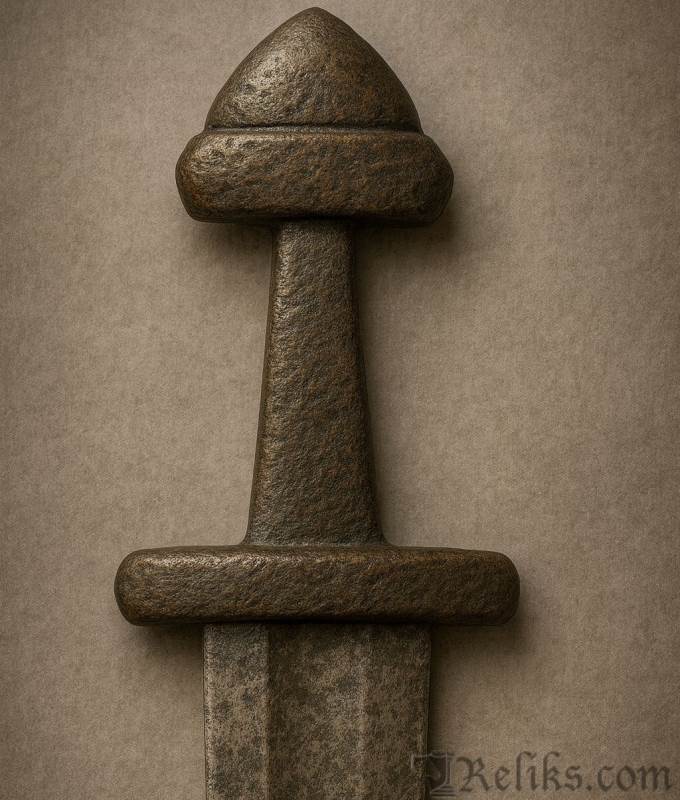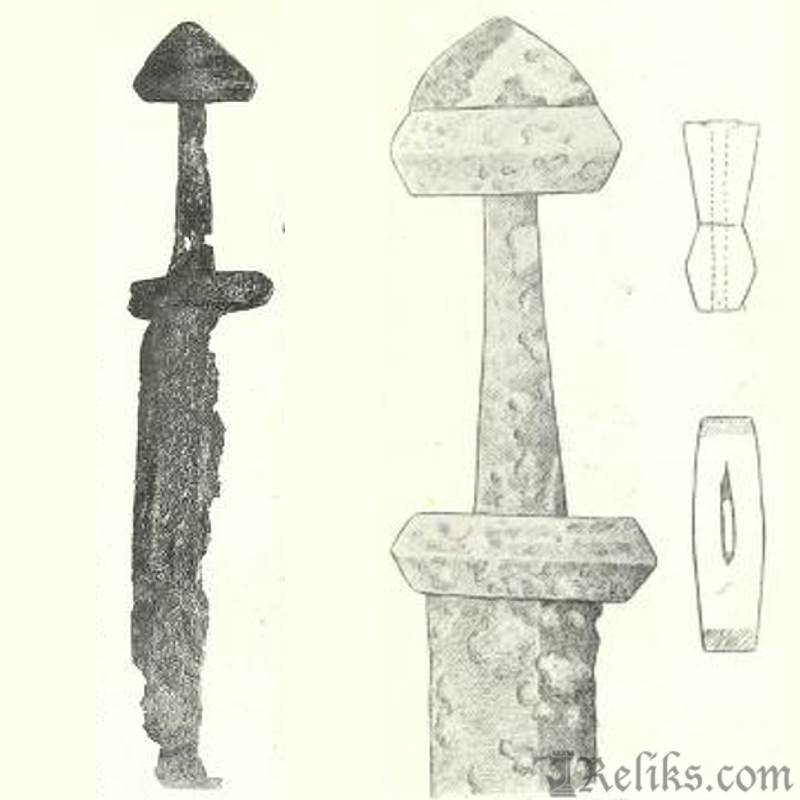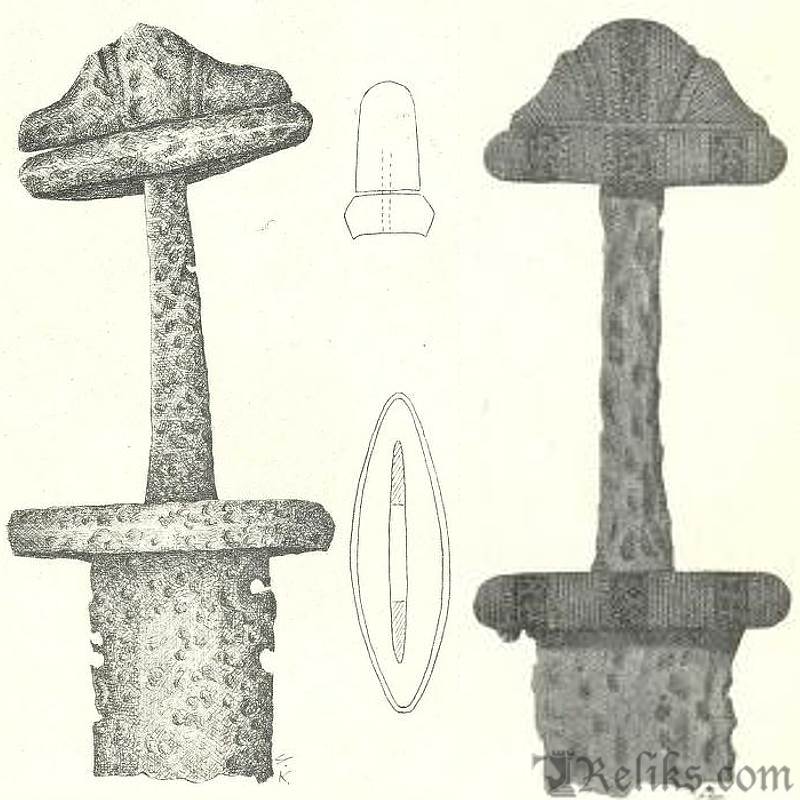Viking Sword Type B – A Heavier Early Form
From Simplicity to Weight
If Type A swords represent the light, plain beginnings of the Viking Age typology, Type B marks a step toward heavier and more imposing weapons. Though still simple in design, these swords feel more substantial in the hand, foreshadowing the sturdier forms to come.
Archaeological Description

Viking Sword Type B – A Heavier Early Form
Type B swords are distinguished by short, high guards with a four-sided cross-section, widest at the middle. The pommel is three-sided and of equal breadth, solid and unadorned. Like Type A, neither the guards nor the pommel carry metal plating or decoration, and the pommel is secured only by flattening the tang rather than by rivets.
The overall impression is heavier than Type A — Petersen noted that while Type B already appears massive, the following type (C) seems even more so.
Of the 22 Norwegian examples Petersen recorded, 14 are double-edged and 8 are single-edged. A few show evidence of pattern-welding: one blade bears damascened marks, another may be fully pattern-welded. Most, however, lack ornament or inscriptions.
Relationships to Other Types

Petersen Sketches (fig53-54)
Type B bridges the simplicity of Type A and the more refined and powerful Type C. In fact, Petersen identified finds where Type B swords appear alongside C-type examples, showing a clear typological development. While some features hint at influence from Migration Period swords with higher central pommels or animal-head terminals, the three-part form of the pommel suggests a deliberate simplification of older, more elaborate designs.
Historical & Cultural Context
Type B belongs largely to the 7th period, the late Iron Age immediately before the Viking Age. This was a time when Scandinavian society was beginning to consolidate power and wealth, and local elites were equipping themselves with weapons that combined practicality with symbolic authority.
One Finnish find even places a Type B sword alongside a true Vendel-type shield boss, tying the weapon to the late Migration/Vendel culture. This shows how the simplification of sword hilts that defined the Viking Age was already beginning. By the time the Viking Age proper began, such simplifications had become the rule rather than the exception.
Distribution and Finds
Type B is far more common than Type A, with 22 specimens in Norway. The majority are concentrated in Trøndelag and western Norway, though isolated examples occur in Hedmark, Valdres, and Vest-Oppland.
Beyond Norway, Type B swords have been found in Finland, Sweden (Gotland, Gästrikland, Uppland, and Gothenburg Museum), Denmark (Nationalmuseet, Copenhagen), and even northern Germany (Schleswig-Holstein and Dithmarschen). This wide distribution suggests a form that was well-established across the broader Scandinavian world.
Associated finds include axes of Types A, B, and C; spearheads with grooves on the socket and blade; single-edged swords without guards; and shield bosses of type R 564. Together, these confirm an early date and tie Type B closely to other weapon groups of the late Iron Age.

Petersen Sketches (fig55-56)
For Collectors and Enthusiasts
Though plainer than later Viking swords, Type B is exciting for enthusiasts because of its transitional nature. It shows us the move from Iron Age sword-making into forms that would dominate the Viking Age. The mix of double- and single-edged examples, with rare traces of pattern-welding, make it an especially intriguing type for collectors and scholars.
Today, surviving specimens can be found in museums across Scandinavia and Germany. For reenactors and enthusiasts, replicas of Type B remain uncommon, making it a sought-after design for those interested in the earliest roots of Viking sword-making.
Closing Reflection
Type B is not a Viking sword in the iconic sense — yet it is one of the most important types for understanding how Viking swords came to be. Emerging from the 7th period and overlapping with the start of the Viking Age, Type B illustrates the Scandinavian tendency toward simplification and standardization of sword hilts. It is the direct ancestor of Type C, and through that connection, it holds an essential place in the evolution of Viking arms.
Core classification based on Jan Petersen, De Norske Vikingesverd (1919). Additional commentary by Reliks.com.